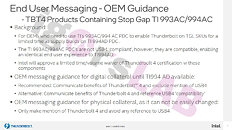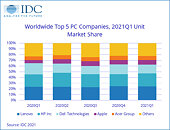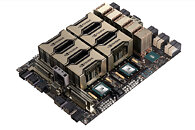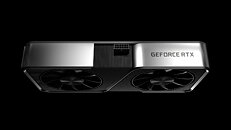Supermicro Experiencing NVIDIA Chip Shortage
Charles Liang, CEO of Super Micro Computer Inc. (SMCI), was interviewed by Bloomberg Television last week—press interest is growing due to his firm benefiting greatly during a massive AI boom period. The San Jose, California-based firm specializes in high-performance and high-efficiency servers—its NVIDIA server product lines are particularly popular at the moment. According to BNN Bloomberg: "production capacity can support sales of as much as $25 billion," but Liang admitted that a shortage of AI GPUs is affecting his company's production goals. Wall Street predicts that Super Micro revenue is expected to double, projecting $14.5 billion "in the year ending in June," while shares have more than tripled since January 1 2024: "as investors bet on increasing need for the equipment that powers AI applications and training."
Liang stated in his interview with Bloomberg TV that: "market demand is so strong," but a simple supply stumbling block stands in the way. The Super Micro boss pointed the proverbial finger at a neighboring tech partner: "There is a chip shortage—once we have more supply from the chip companies, from NVIDIA, we can ship more to customers." His company has proudly announced on several occasions that it remains an industry leading supplier of Team Green AI HPC solutions, with recent launches of HGX and MGX-based HPC systems. NVIDIA AI GPU supply woes are not a novel thing at this point in time—many industry watchdogs believe that AMD is benefiting from a well timed launch of competing accelerators. Taiwanese supply chain insiders reckon that GIGABYTE's server division is wholeheartedly embracing Instinct MI300X.
Liang stated in his interview with Bloomberg TV that: "market demand is so strong," but a simple supply stumbling block stands in the way. The Super Micro boss pointed the proverbial finger at a neighboring tech partner: "There is a chip shortage—once we have more supply from the chip companies, from NVIDIA, we can ship more to customers." His company has proudly announced on several occasions that it remains an industry leading supplier of Team Green AI HPC solutions, with recent launches of HGX and MGX-based HPC systems. NVIDIA AI GPU supply woes are not a novel thing at this point in time—many industry watchdogs believe that AMD is benefiting from a well timed launch of competing accelerators. Taiwanese supply chain insiders reckon that GIGABYTE's server division is wholeheartedly embracing Instinct MI300X.









































